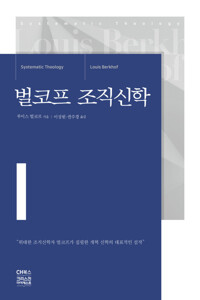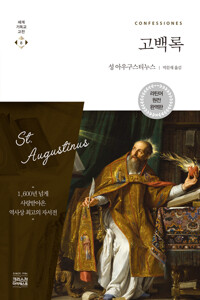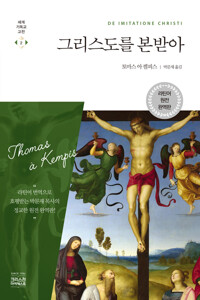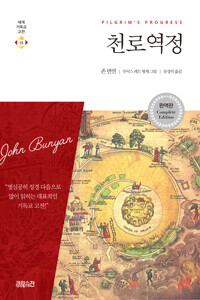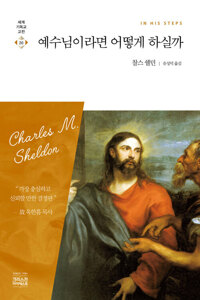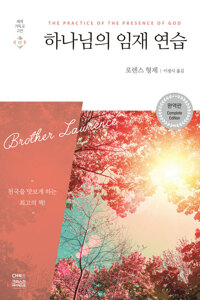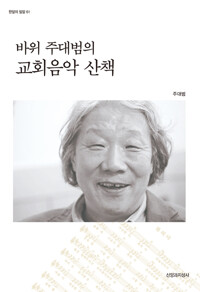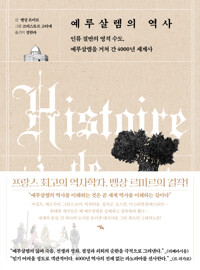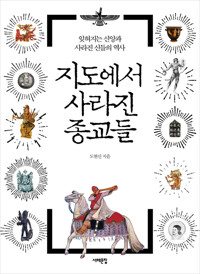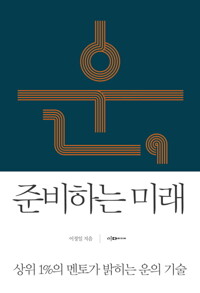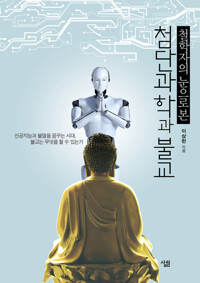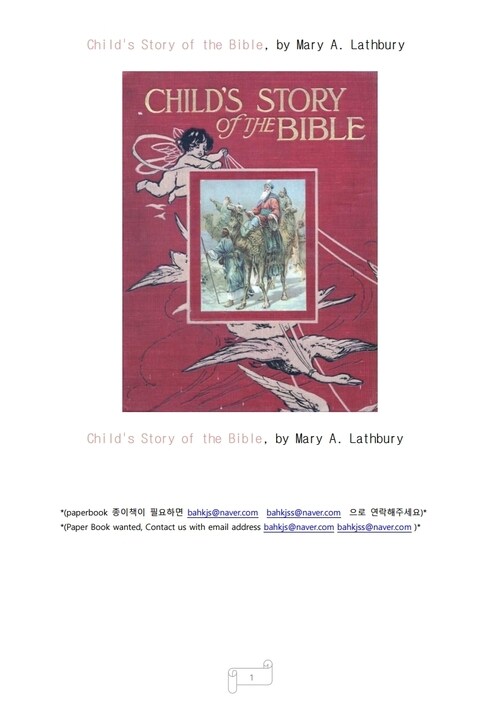

어린이 성경 이야기 (Child's Story of the Bible, by Mary A. Lathbury)
M A Lathbury어린이성경이야기.Child's Story of the Bible, by Mary A. Lathbury
INTRODUCTION.
When the children gather at mother's knee, and the tiniest finds a place in
mother's arms, and all clamor for a "story," "a story, mamma," how lovely is the
picture―the living picture―that circle makes! Love, longing, wisdom, expectancy,
faith, shining eyes, lips that move involuntarily, keeping time to the sweet
movements of mother's lips! Blessed group! Happy mother!
When the stories mother tells are light and meaningless, full of rhyme and
rollick, even their eyes are bright and faces radiant, and her own sweet face and
voice give charm and weight and significance to the delicious nonsense she
rehearses.
Why not give to this receptive and eager audience stories full of deepest
meaning, facts, parables, myths charged with truth? Why not people little
memories with heroes, saints, kings, prophets, apostles? Why not give stories to
story-loving youngsters that will turn into immortal pictures and be transformed
some day into living factors in the making of character? And why not give them as
comparison the babe of Bethlehem, the boy of Nazareth, the lad of twelve years in
the schools of the Temple, the man of gentle love, the preacher of righteousness,
the worker of heavenly wonders, the Son of Man, the Son of God, the Prince of
Peace?
The Book of books is the children's Book. It is a story book. And the stories
are "true stories." And the lessons to be drawn from them are numberless, and will
come up out of the treasure-house of memory when mother's eyes are closed and
her voice silent.
It is a great thing to put mother and the Book together in Baby's thought; in the
big boy's memory; in the grown-up man's heart and life.
This book is mother's book; to aid her in doing the best and most lasting work
a mother can do to sow seed and set out vines the branches of which shall reach
into the world of spirits, and from which she and her children may long afterwards
pluck fruit together in the eternal kingdom.
JOHN H. VINCENT.
CHAUTAUQUA, 1898.
INTRODUCTION.
When the children gather at mother's knee, and the tiniest finds a place in
mother's arms, and all clamor for a "story," "a story, mamma," how lovely is the
picture―the living picture―that circle makes! Love, longing, wisdom, expectancy,
faith, shining eyes, lips that move involuntarily, keeping time to the sweet
movements of mother's lips! Blessed group! Happy mother!
When the stories mother tells are light and meaningless, full of rhyme and
rollick, even their eyes are bright and faces radiant, and her own sweet face and
voice give charm and weight and significance to the delicious nonsense she
rehearses.
Why not give to this receptive and eager audience stories full of deepest
meaning, facts, parables, myths charged with truth? Why not people little
memories with heroes, saints, kings, prophets, apostles? Why not give stories to
story-loving youngsters that will turn into immortal pictures and be transformed
some day into living factors in the making of character? And why not give them as
comparison the babe of Bethlehem, the boy of Nazareth, the lad of twelve years in
the schools of the Temple, the man of gentle love, the preacher of righteousness,
the worker of heavenly wonders, the Son of Man, the Son of God, the Prince of
Peace?
The Book of books is the children's Book. It is a story book. And the stories
are "true stories." And the lessons to be drawn from them are numberless, and will
come up out of the treasure-house of memory when mother's eyes are closed and
her voice silent.
It is a great thing to put mother and the Book together in Baby's thought; in the
big boy's memory; in the grown-up man's heart and life.
This book is mother's book; to aid her in doing the best and most lasting work
a mother can do to sow seed and set out vines the branches of which shall reach
into the world of spirits, and from which she and her children may long afterwards
pluck fruit together in the eternal kingdom.
JOHN H. VINCENT.
CHAUTAUQUA, 1898.














